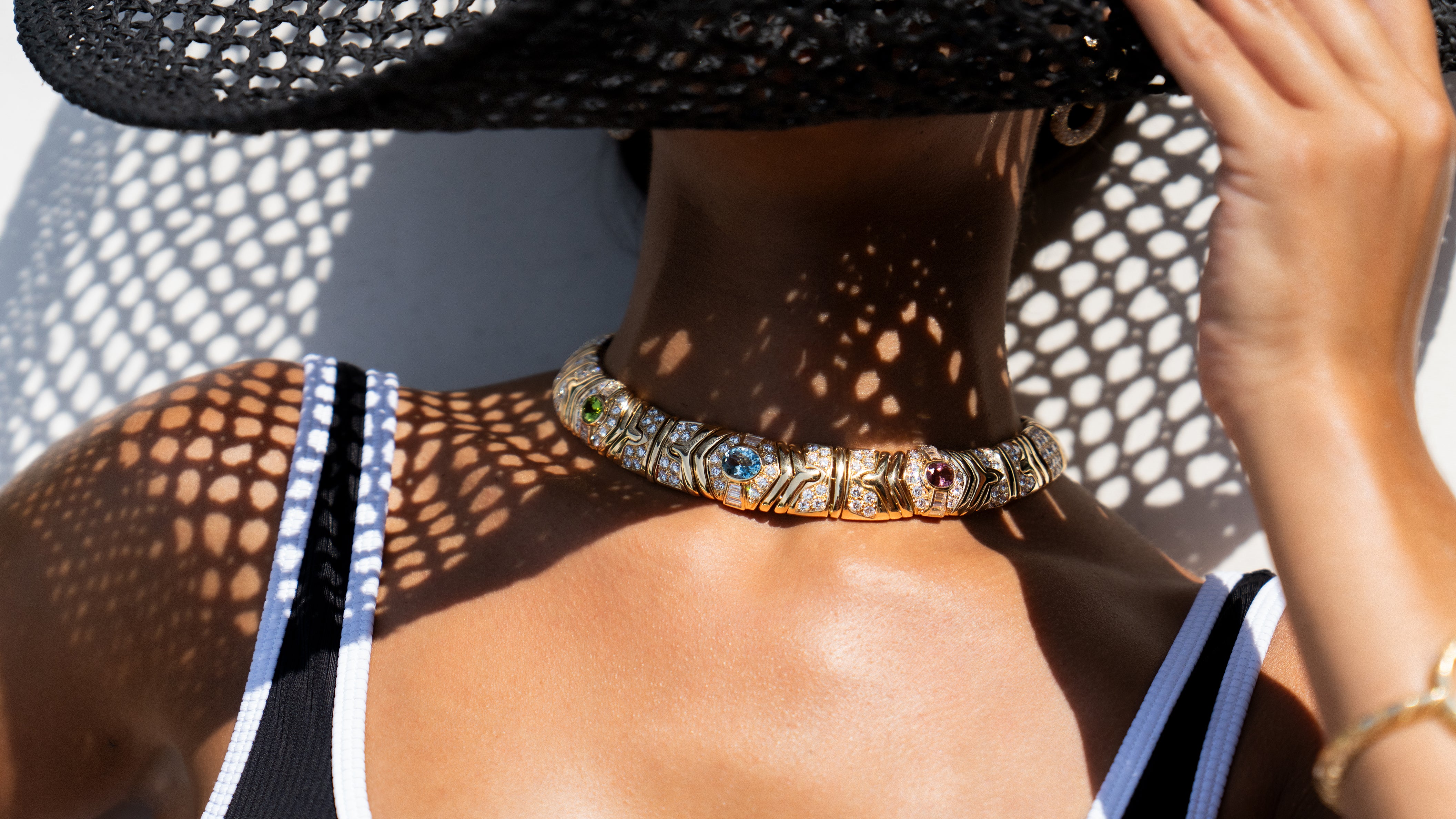Arts and Crafts Jewelry: 1880-1920
A backlash to the mass-produced jewelry of the mid-1800s, the Arts and Crafts Movement produced handcrafted jewels that reflected the creative talents of a generation of artisans.
The Original Concept
The mechanization of jewelry production that emerged during the Victorian era resulted in pieces that were affordable to the masses but came to include an uninspired assortment of jewels lacking in aesthetic appeal.
The original intent of the Arts & Crafts movement was to bring hand made objets d’art to the working classes. The movement relied on guild-style education and craftspeople that could bring to life the patterns created by their designers. Advocates believed each piece should be created from beginning to end by one artisan. The refusal to use traditional jewelers and manufacturers was required for proponents of the guild system. The belief was this would lead to handcrafted pieces with a unique design rather than a piece valued for its expensive components.


In time, it became apparent that the intent to handcraft each piece by a single artisan from start to finish actually resulted in jewels that were too costly for the working populace, who also lacked an appreciation for the aesthetic value of these one-of-a-kind pieces.
The firms that were most successful were those who took inspiration from the Arts & Crafts movement, hiring their own artisans but mass-producing the pieces. Liberty & Co. was one of the most prolific manufacturers, using high standards of production that ensured an extensive range of clients. Liberty also solicited customers for their preference in enamels and gemstones, a practice that enhanced their popularity with the hoi polloi.


Arts & Crafts Style
The convergence of Gothic, Renaissance Revival, Art Nouveau and Edwardian styles contributed to the motifs found in Arts & Crafts jewels.
In general, Arts & Crafts jewelry was more practical and less frou-frou than earlier Victorian styles. Belt buckles, clasps and belts featured accents of enamel and gemstones. Hair ornaments that included intricately carved ivory or horn combs replaced the tiaras studded with diamonds that were prevalent in earlier eras. Tiaras that remained featured natural designs embellished with enamel rather than precious gemstones.

Necklaces were the must-have accessories of the Arts & Crafts period, including pendants decorated with enamel and cabochon gems. Earrings were not in vogue.
Plique-à-jour – a technique whereby the enamel was placed into a cell with no backing, creating a stained glass effect – was used liberally during this time. Brooch motifs featured most often using this technique were flowers, insects and leafy plants.
Bracelets that alternated medalist style plaques with chain links, flowers and ribbons were a favorite. Stylized feminine motifs, carved in metal and wrapped around plants and insects, embraced cabochon gems, in the few rings designed in the Arts & Crafts style.
Popular motifs were heavily influenced by Medieval and Renaissance styling, most notably featured in pendants, necklaces, clasps and buckles.
Leaves were a distinctive design element; one that was so unique, artisans can often be identified by the variation of the leaf’s creation.


Arts & Crafts Materials
Craftsmen used silver, copper and aluminum settings and avoided the use of precious gemstones. Gold was used sparingly. Hammered textures were famous for the soft luster they created, as opposed to the machine-made high-polish look.
Mother-of-pearl, baroque pearls and freshwater pearls were popular. Moonstone, garnet, opal, turquoise, amethyst and opal were also on trend, and featured the cabochon cut in bezel settings.
Hand-painted enamel was a decorative element that separated original pieces from those produced by machine.


Women Join the Movement
Women played an integral role in the designing, enameling and handcrafting of Arts & Crafts jewelry. It was the first time that women in large numbers became a part of the jewelry industry, with much success – and with acknowledgement by the press of their achievements.
Working with husband Arthur, Georgie Gaskin became a metal smith, and May Morris was recognized as an early producer of Arts & Crafts jewelry. Charlotte Newman, who apprenticed with archaeological jeweler John Brogden, went on to employ many of Brogden’s craftsmen after his death.
Married artisans rose to prominence during the Arts & Crafts movements, notably C.R. Mackintosh and his wife, Margaret, as well as Frances and J. Herbert MacNair, who fashioned some of the most original designs of the period.


Across the Pond
The Movement found its way to the United States, with Arts & Crafts Societies popping up in Chicago, Boston and Upstate New York. The American pieces featured a more stylized theme, with a paler palette and simpler designs that incorporated paper-clip style chains with tee and loop clasps.
End of an Era
The Arts & Crafts movement lost traction in the years following World War I, and the guild system became nearly extinct following the Second World War, but individual artisans still worked in the Arts & Crafts style, morphing their designs to incorporate changing influences. Many of the techniques used in the Arts & Crafts Movement continue to influence artisans to this day.
Browse our Selection of Arts & Crafts Jewelry
